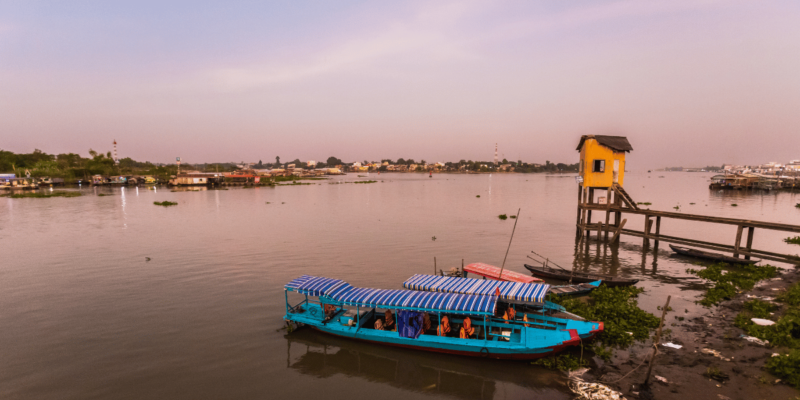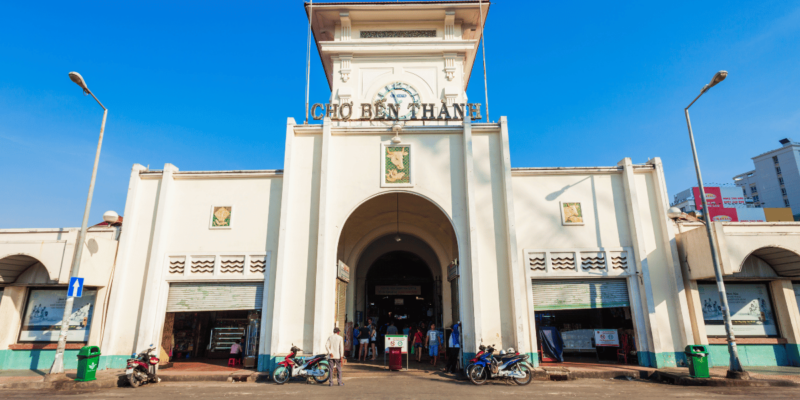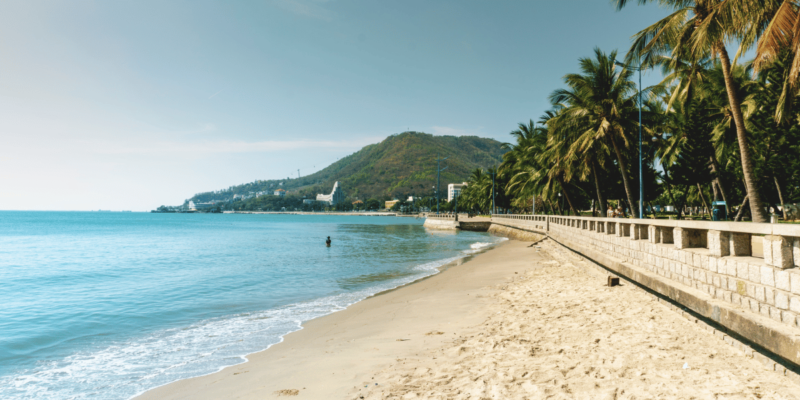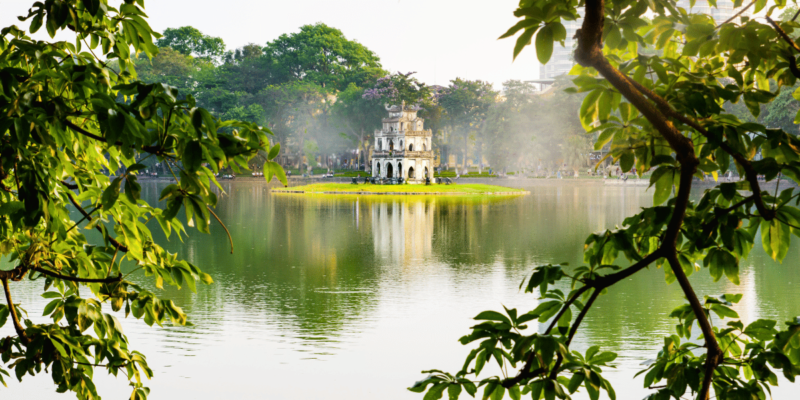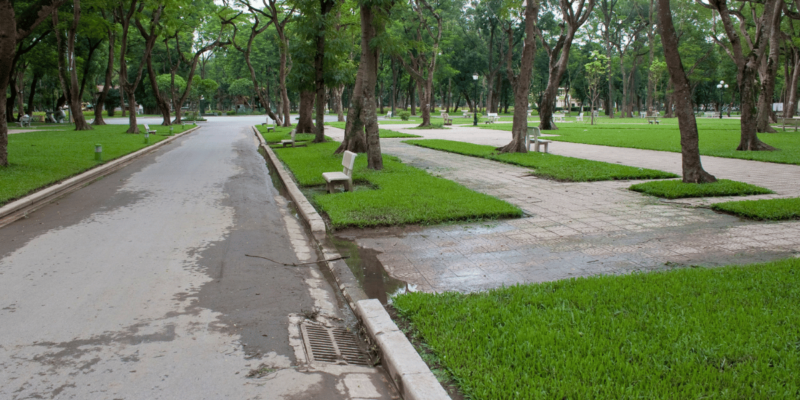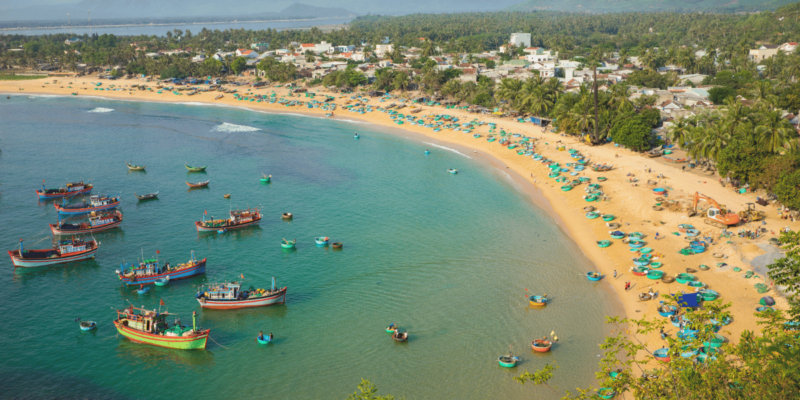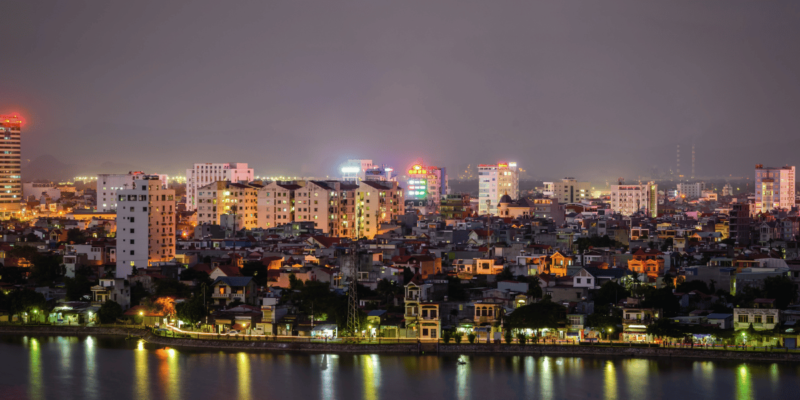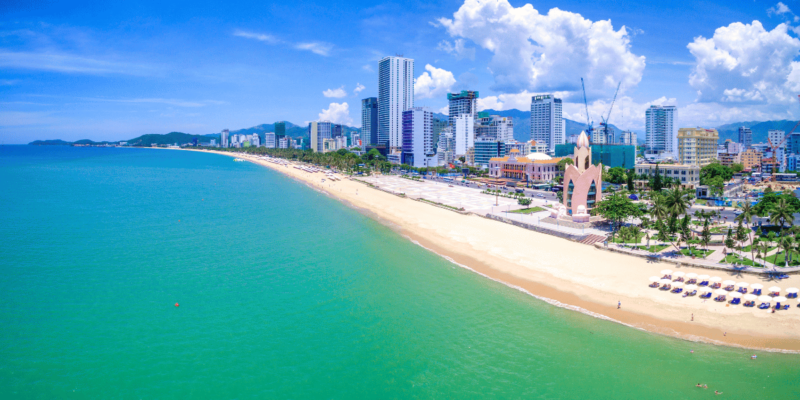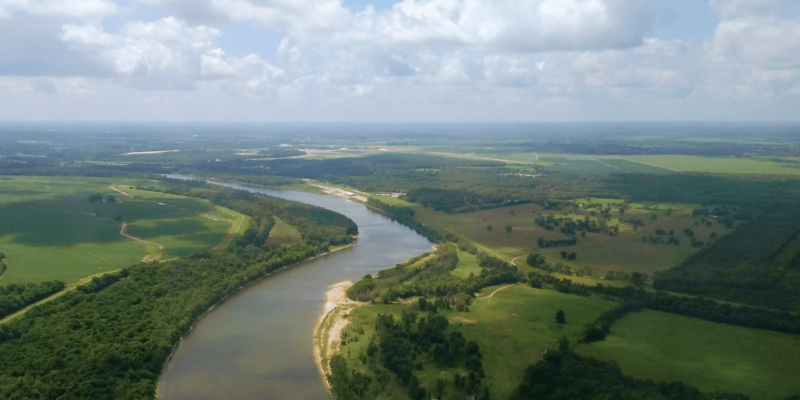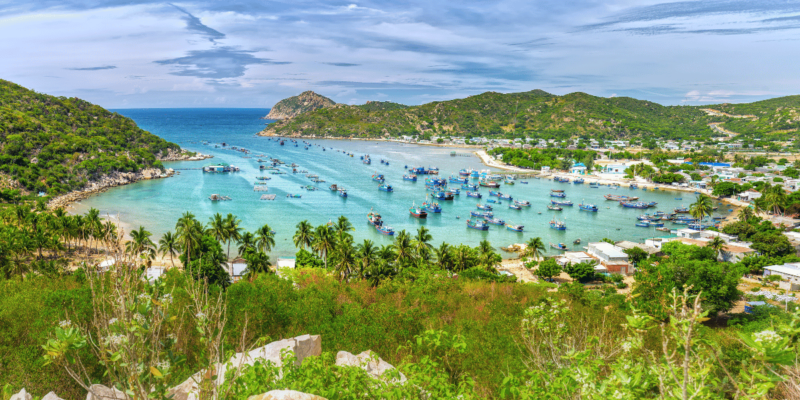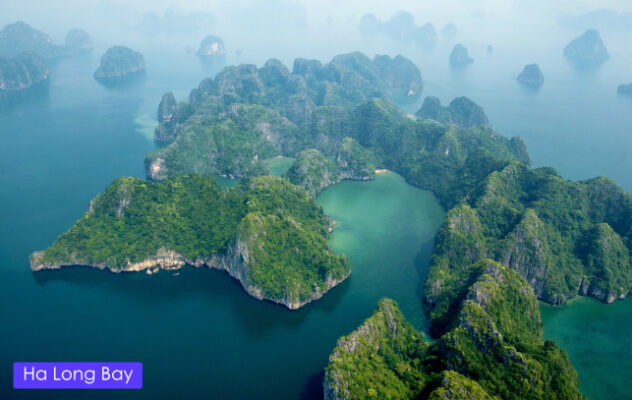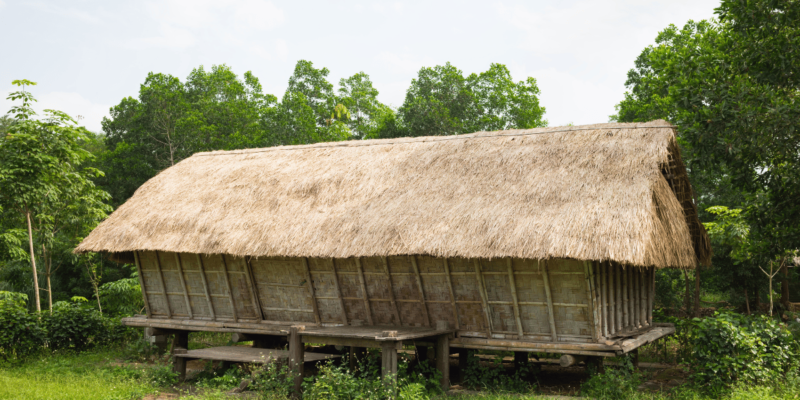The Red River Delta: Vietnam’s Thriving Heart of Agriculture and Craftsmanship
The Red River Delta, located in northern Vietnam, is a vital region that plays a crucial role in the country’s agriculture and craftsmanship. This fertile area, fed by the Red River and its tributaries, has been the cradle of Vietnamese civilization for centuries. Known for its lush landscapes and rich cultural heritage, the Red River Delta is not only a key agricultural hub but also a center for traditional crafts and artistry.
This article aims to highlight the Red River Delta’s agricultural abundance and craftsmanship excellence. By exploring its unique attributes, we hope to showcase the importance of this region to both Vietnam and the world. The delta’s contributions to the country’s food supply and cultural heritage are invaluable, making it a cornerstone of Vietnamese identity.
Geography and Climate
Geographic Features
The Red River Delta is characterized by its vast, flat plains and intricate network of rivers and tributaries. Spanning an area of approximately 15,000 square kilometers, it is bordered by the mountainous regions of northern Vietnam and the Gulf of Tonkin to the east. The delta is fed by the Red River, which originates in the mountains of southwestern China and flows southeastward into the Gulf of Tonkin, along with its tributaries such as the Thai Binh and Day Rivers. This extensive river network is crucial for irrigation, making the land extremely fertile and suitable for intensive agriculture.
Climate
The Red River Delta experiences a humid subtropical climate with four distinct seasons. Summers (May to September) are typically hot and humid, with temperatures often soaring above 30°C (86°F) and frequent afternoon thunderstorms. Winters (November to February) are cooler and drier, with temperatures averaging between 15°C (59°F) and 20°C (68°F), though they can occasionally drop below 10°C (50°F) in the northernmost parts. Spring (March to April) and autumn (October) are characterized by mild and pleasant weather, making these seasons ideal for agriculture and outdoor activities. The diverse climate supports a variety of crops and significantly influences the agricultural practices and daily life of the local population.
Agricultural Abundance
Rice Cultivation
Importance of Rice in the Delta
Rice is the staple crop of the Red River Delta and a critical component of Vietnam’s food security. The delta’s fertile soil and abundant water resources make it ideal for rice cultivation, which has been practiced here for over a thousand years. Rice paddies, with their vibrant green stalks and golden harvests, dominate the landscape, creating picturesque scenes that are iconic of rural Vietnam. The delta’s rice production not only feeds the local population but also contributes significantly to the country’s rice exports, making Vietnam one of the top rice exporters globally.
Traditional and Modern Farming Techniques
Farmers in the delta utilize both traditional and modern techniques to cultivate rice. Traditional methods, such as manual planting and harvesting, are still prevalent, preserving the cultural heritage and community practices. Farmers often plant rice by hand, a method that requires meticulous attention to detail and considerable labor. Harvesting is typically done with sickles, a technique passed down through generations.
In recent years, modern techniques have also been adopted to increase productivity and efficiency. The use of high-yield rice varieties, mechanized equipment for plowing and harvesting, and advanced irrigation systems have significantly boosted rice production. Integrated pest management and organic farming practices are increasingly being employed to enhance sustainability and reduce environmental impact. This blend of traditional and modern practices ensures that the delta remains a powerhouse of rice production.
Diverse Crops
Other Significant Crops
Besides rice, the Red River Delta produces a wide range of crops, adding to its agricultural diversity. Vegetables such as cabbage, carrots, and tomatoes are widely grown and are essential components of the local diet. Fruit cultivation is also significant, with orchards producing lychee, longan, oranges, and bananas. These fruits are not only consumed locally but also exported, contributing to the region’s economic vitality.
Flower cultivation is another important agricultural activity, especially in villages like Tay Tuu, which is known as the “flower village” of Hanoi. Farmers here grow a variety of flowers, including roses, chrysanthemums, and lilies, supplying both domestic and international markets. The vibrant fields of flowers are a testament to the delta’s agricultural richness and the farmers’ expertise.
Role of the Delta in National Food Supply
The Red River Delta is often referred to as the “rice bowl” of northern Vietnam, contributing significantly to the country’s food supply. Its agricultural output supports not only the local population but also enhances national food security. The delta’s fertile lands and favorable climate conditions enable the cultivation of diverse crops, ensuring a stable and abundant food supply throughout the year. This region’s productivity is crucial for Vietnam’s economy, providing essential resources for both domestic consumption and export markets.
Livestock and Aquaculture
Common Livestock Raised in the Delta
Livestock farming is another vital component of the delta’s agriculture. Common livestock includes pigs, chickens, ducks, and cattle. These animals are raised using both traditional free-range methods and modern farming techniques. Livestock farming provides a significant source of income for local farmers and contributes to the region’s food supply. Pigs, in particular, are a major livestock product, with pork being a staple in Vietnamese cuisine. Free-range chickens and ducks are also highly valued for their meat and eggs.
Aquaculture Practices and Products
The delta’s extensive water network supports robust aquaculture activities. Fish, shrimp, and crab farming are common, providing a significant source of income for local farmers. The delta’s ponds, rivers, and coastal areas are ideal for raising freshwater and saltwater species. Fish such as tilapia, catfish, and carp are widely farmed, along with prawns and crabs. Aquaculture products from the delta are highly valued for their quality and are exported worldwide. Sustainable aquaculture practices are being increasingly adopted to ensure the long-term viability of these resources, contributing to the region’s economic stability and food security.
Craftsmanship and Handicrafts
Traditional Craft Villages
Overview of Famous Craft Villages
The Red River Delta is renowned for its traditional craft villages, where artisans produce exquisite handmade products. Villages like Bat Trang, Van Phuc, and Dong Ky have a long history of craftsmanship, passed down through generations. Each village specializes in a particular craft, reflecting the rich cultural heritage and artistic skills of the region.
Historical Development of These Villages
These craft villages have thrived for centuries, each specializing in a particular craft. Bat Trang is famous for its ceramics, Van Phuc for its silk, and Dong Ky for its woodwork. The skills and techniques have been preserved and perfected over time, making these villages cultural treasures. The development of these villages can be traced back to ancient times when local artisans began creating goods for both everyday use and ceremonial purposes. Over the centuries, these crafts have evolved, incorporating new techniques and styles while maintaining their traditional essence.
Pottery and Ceramics
Detailed Look at Bat Trang Pottery Village
Bat Trang, located near Hanoi, is one of the most famous pottery villages in Vietnam. The village has been producing high-quality ceramics for over 700 years. Visitors can explore workshops, watch artisans at work, and even try their hand at pottery making. The village’s narrow streets are lined with shops selling a variety of ceramic products, from everyday household items to intricate decorative pieces.
Techniques and Products
Bat Trang ceramics are known for their unique glazes and intricate designs. Traditional techniques include hand-throwing on the wheel, glazing, and kiln firing. The artisans of Bat Trang use local clay, which is known for its plasticity and durability, to create their masterpieces. Products range from functional items like bowls, plates, and teapots to artistic vases, statues, and tiles. These ceramics are highly sought after both locally and internationally, prized for their quality and artistic value.
Silk Weaving
Exploration of Van Phuc Silk Village
Van Phuc, located in Ha Dong District, is renowned for its silk weaving. The village has a history of over 1,000 years in producing high-quality silk, which was once reserved for royalty. Van Phuc silk is known for its smooth texture, durability, and vibrant colors. The village is a popular destination for visitors looking to purchase exquisite silk products and learn about the weaving process.
Weaving Techniques and Famous Products
Van Phuc artisans use traditional looms to weave silk, creating beautiful patterns and textures. The silk produced here is known for its durability, softness, and vibrant colors. Popular products include scarves, traditional ao dai dresses, and other garments. The weaving process involves several intricate steps, from spinning the silk threads to dyeing and weaving them into fabric. Each piece of silk is a testament to the skill and dedication of the artisans, reflecting the rich cultural heritage of the region.
Other Handicrafts
Woodworking, Lacquerware, and Bamboo Crafts
The delta is also known for its woodworking, lacquerware, and bamboo crafts. Dong Ky village is famous for its intricate wood carvings and furniture, while Ha Thai village produces stunning lacquerware. Bamboo crafts, including baskets and mats, are commonly made in Phu Vinh village. These crafts showcase the versatility and creativity of the local artisans, who use natural materials to create functional and decorative items.
Unique Products and Their Cultural Significance
These handicrafts are not just products but carry cultural significance. They reflect the artistic heritage and craftsmanship skills that have been honed over centuries. Each item tells a story and represents the cultural identity of the region. From the detailed carvings of Dong Ky woodworkers to the vibrant lacquerware of Ha Thai, these crafts are deeply rooted in the cultural traditions of the Red River Delta. They are celebrated for their beauty and craftsmanship, making them highly prized by collectors and enthusiasts worldwide.
Cultural and Historical Significance
Historical Landmarks
Notable Historical Sites in the Delta
The Red River Delta is home to numerous historical sites, including ancient temples, pagodas, and relics. Notable landmarks include the Temple of Literature in Hanoi, the Thay Pagoda, and the ancient town of Duong Lam. These sites are not only architectural marvels but also hold great historical significance. They provide insight into Vietnam’s rich cultural and historical heritage, showcasing the region’s importance in the country’s development.
Their Importance in Vietnamese History
These sites are significant not only for their architectural beauty but also for their historical and cultural value. The Temple of Literature, for example, is Vietnam’s first national university, established in 1076, and a symbol of the country’s educational heritage. The Thay Pagoda, built in the 11th century, is an important religious site that attracts pilgrims and tourists alike. Duong Lam Ancient Village offers a glimpse into traditional Vietnamese village life, with its well-preserved houses and communal spaces. These landmarks are integral to understanding Vietnam’s history and culture, providing a connection to the past.
Festivals and Traditions
Major Festivals Celebrated in the Delta
The delta is vibrant with festivals and traditional celebrations. Major festivals include Tet Nguyen Dan (Lunar New Year), Mid-Autumn Festival, and the Perfume Pagoda Festival. These festivals are celebrated with great enthusiasm and are integral to the cultural life of the region. They involve various rituals, performances, and communal activities that strengthen social bonds and preserve cultural heritage.
Traditional Customs and Their Meanings
These festivals are steeped in tradition, reflecting the region’s cultural values and community spirit. Tet Nguyen Dan, the most important festival in Vietnam, marks the Lunar New Year and involves days of celebration, feasting, and honoring ancestors. The Mid-Autumn Festival is celebrated with lantern processions, mooncakes, and lion dances, symbolizing unity and family reunion. The Perfume Pagoda Festival, a significant religious event, attracts thousands of pilgrims who journey to the Perfume Pagoda to pray for health and prosperity. These festivals provide a deep insight into the cultural fabric of the delta, showcasing its rich traditions and community spirit.
Economic Impact
Role in Vietnam’s Economy
Contribution to the National GDP
The Red River Delta is a significant contributor to Vietnam’s economy, particularly in agriculture and handicrafts. The region’s productivity supports national food security and contributes to the country’s GDP. Agriculture, including rice farming, livestock, and aquaculture, forms the backbone of the delta’s economy. The handicraft sector, with its high-quality ceramics, silk, and woodwork, also plays a crucial role, generating income and employment for the local population.
Employment Opportunities in Agriculture and Crafts
The delta provides extensive employment opportunities in farming, fishing, and craftsmanship. These industries are vital for the livelihoods of the local population and contribute to the overall economic stability of the region. Agriculture employs a significant portion of the workforce, from rice farmers to fruit growers and livestock breeders. The craft villages also offer numerous job opportunities, with artisans, traders, and entrepreneurs involved in producing and selling handcrafted goods. These sectors not only sustain the local economy but also promote cultural preservation and innovation.
Export Markets
Key Agricultural and Craft Products Exported
Products from the Red River Delta, including rice, fruits, ceramics, and silk, are exported globally. These exports are highly valued for their quality and craftsmanship, enhancing Vietnam’s reputation in international markets. Vietnamese rice, known for its quality and taste, is exported to numerous countries, contributing significantly to the nation’s export earnings. The delta’s fruits, especially lychees and longans, are popular in markets around the world. Handicrafts from the delta, such as Bat Trang ceramics and Van Phuc silk, are sought after for their beauty and artistry, making them prized possessions for collectors and enthusiasts.
Importance of International Markets
International markets are crucial for the delta’s economy, providing income and fostering economic growth. The global demand for Vietnamese agricultural products and handicrafts continues to grow, driving further development in the region. Export activities not only generate revenue but also create opportunities for local businesses to expand and innovate. By reaching international markets, the Red River Delta can showcase its rich cultural heritage and high-quality products to a global audience, enhancing its economic prospects and cultural influence.
Challenges and Sustainability
Environmental Challenges
Issues Such as Flooding, Climate Change, and Pollution
The Red River Delta faces several environmental challenges, including flooding, climate change, and pollution. These issues threaten the region’s agriculture and craftsmanship, impacting livelihoods and economic stability. Flooding, often caused by heavy rains and rising river levels, can devastate crops and disrupt farming activities. Climate change poses long-term risks, with rising temperatures and unpredictable weather patterns affecting agricultural productivity. Pollution, particularly in rivers and waterways, impacts water quality and poses risks to both agriculture and aquaculture.
Impact on Agriculture and Craftsmanship
Flooding and changing weather patterns can damage crops and disrupt farming cycles. Pollution, particularly in rivers and waterways, affects both agriculture and aquaculture, posing risks to food safety and sustainability. These environmental challenges require urgent attention and effective solutions to mitigate their impact. Sustainable practices and innovative technologies are essential to ensure the long-term viability of the delta’s agriculture and craftsmanship.
Sustainability Efforts
Initiatives to Promote Sustainable Farming and Crafting Practices
Efforts are being made to promote sustainable farming and crafting practices in the delta. Initiatives include the use of organic farming methods, integrated pest management, and environmentally friendly crafting techniques. Organic farming reduces the reliance on chemical fertilizers and pesticides, promoting healthier and more sustainable agriculture. Integrated pest management involves using natural predators and biological controls to manage pests, reducing the environmental impact. In the crafting sector, eco-friendly materials and sustainable production methods are being adopted to minimize environmental damage.
Government and Local Community Efforts
Both government and local communities are actively involved in sustainability efforts. Programs aimed at improving water management, reducing pollution, and promoting eco-friendly practices are being implemented to ensure the long-term viability of the region’s agriculture and craftsmanship. Government policies support sustainable development, providing incentives for farmers and artisans to adopt environmentally friendly practices. Local communities are also playing a vital role, with grassroots initiatives and community-led projects promoting sustainability and resilience.
Tourism Potential
Attractions for Visitors
Key Tourist Attractions in the Delta
The Red River Delta offers numerous attractions for tourists, including historical sites, craft villages, and scenic landscapes. Popular destinations include the Temple of Literature, Bat Trang pottery village, and the picturesque rice terraces of Ninh Binh. These sites provide a rich cultural and historical experience, showcasing the delta’s heritage and natural beauty.
Experiences for Tourists
Tourists can enjoy a variety of experiences, from farm tours and cooking classes to craft workshops and river cruises. These activities provide an immersive experience, allowing visitors to connect with the local culture and heritage. Farm tours offer insights into traditional farming practices and local agriculture, while cooking classes provide an opportunity to learn and taste Vietnamese cuisine. Craft workshops in villages like Bat Trang and Van Phuc allow visitors to engage with artisans and create their own handcrafted items. River cruises on the Red River offer scenic views and a relaxing way to explore the delta.
Developing Tourism Infrastructure
Current Infrastructure and Future Plans
The region has seen significant investment in tourism infrastructure, including improved transportation, accommodation, and tourist services. Future plans aim to enhance these facilities further, making the delta more accessible and attractive to international visitors. Improved roads and transport links make it easier for tourists to explore the region, while new hotels and guesthouses provide comfortable accommodation options. Tourist services, including guided tours and information centers, enhance the visitor experience, providing valuable insights and assistance.
Benefits of Tourism for Local Communities
Tourism provides numerous benefits for local communities, including job creation, increased income, and cultural exchange. It also helps preserve traditional crafts and cultural practices by creating demand for local products and experiences. Tourism fosters economic development, providing new opportunities for businesses and entrepreneurs. It also promotes cultural exchange, allowing locals and visitors to share and learn from each other, enriching the cultural fabric of the region.
Conclusion
The Red River Delta is a vital region in Vietnam, known for its agricultural abundance and craftsmanship excellence. Its contributions to the country’s food supply and cultural heritage are invaluable, making it a cornerstone of Vietnamese identity. The delta’s rich cultural heritage, agricultural productivity, and artistic traditions are essential components of Vietnam’s economy and cultural landscape.
As the Red River Delta continues to develop and face challenges, it remains a vibrant and essential part of Vietnam’s landscape. Encouraging sustainable practices and supporting local communities are crucial for its future. Exploring this region offers a unique opportunity to experience the heart of Vietnam’s agricultural and cultural richness. Whether through tourism, investment, or cultural exchange, supporting the Red River Delta ensures that its traditions and contributions will continue to thrive for generations to come.

